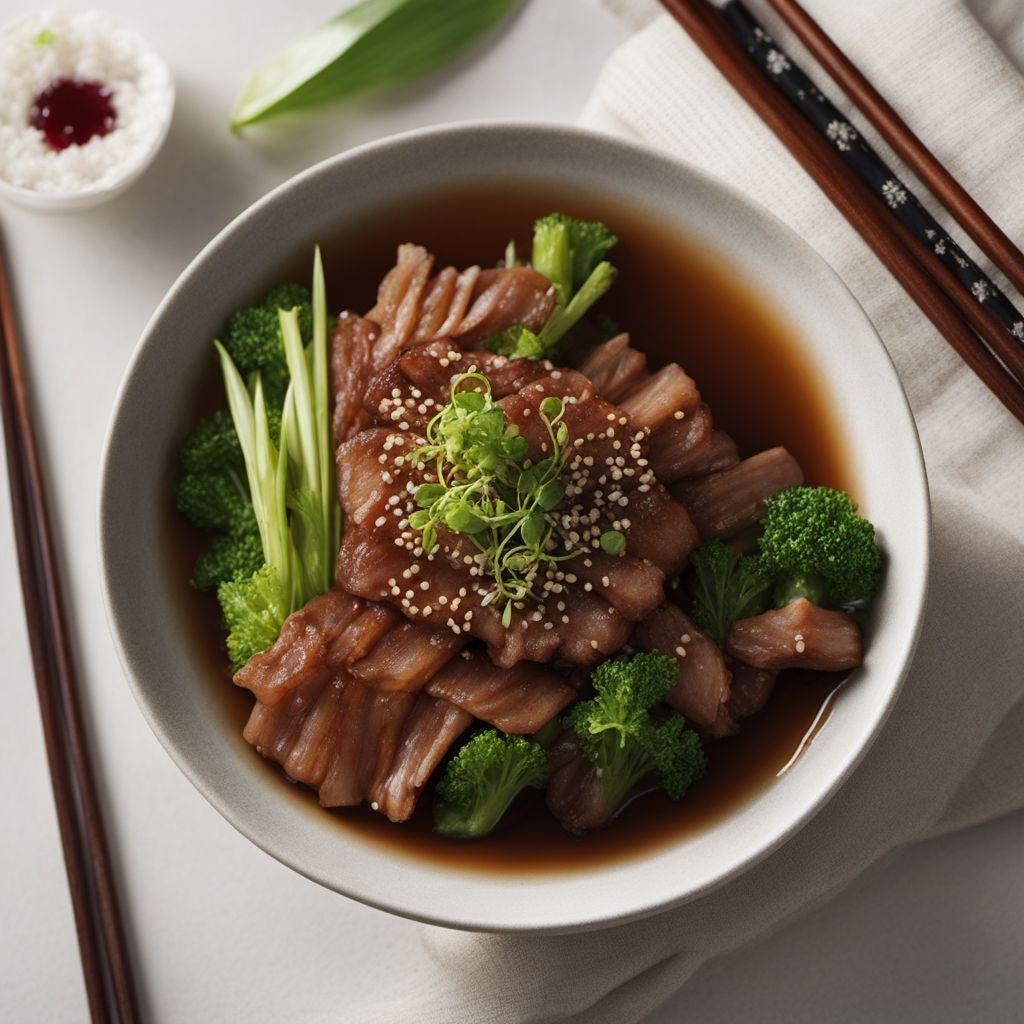
Recipe
Sanbaizu - Japanese Vinegar Sauce
Tangy Delight: Sanbaizu - A Refreshing Japanese Vinegar Sauce
4.4 out of 5
Sanbaizu is a traditional Japanese vinegar sauce that adds a burst of tangy flavor to various dishes. Made with a combination of vinegar, soy sauce, and mirin, this versatile sauce is a staple in Japanese cuisine.
Metadata
Preparation time
5 minutes
Cooking time
N/A
Total time
5 minutes
Yields
4 servings
Preparation difficulty
Easy
Suitable for
Vegan, Vegetarian, Gluten-free, Dairy-free, Nut-free
Allergens
Soy
Not suitable for
Paleo, Keto, Low-carb, High-protein, Whole30
Ingredients
-
1/4 cup (60ml) rice vinegar 1/4 cup (60ml) rice vinegar
-
2 tablespoons soy sauce 2 tablespoons soy sauce
-
2 tablespoons mirin 2 tablespoons mirin
-
1 tablespoon honey 1 tablespoon honey
-
1/2 teaspoon grated ginger 1/2 teaspoon grated ginger
-
1/2 teaspoon sesame oil 1/2 teaspoon sesame oil
Nutrition
- Calories (kcal / KJ): 40 kcal / 167 KJ
- Fat (total, saturated): 1g, 0g
- Carbohydrates (total, sugars): 7g, 6g
- Protein: 1g
- Fiber: 0g
- Salt: 1.5g
Preparation
-
1.In a small bowl, whisk together the rice vinegar, soy sauce, mirin, honey, grated ginger, and sesame oil until well combined.
-
2.Allow the sauce to sit for 10 minutes to allow the flavors to meld together.
-
3.Give the sauce a final whisk before using it as a dipping sauce or marinade.
Treat your ingredients with care...
- Rice vinegar — Use a high-quality rice vinegar for the best flavor.
- Soy sauce — Opt for low-sodium soy sauce if you prefer a less salty taste.
- Mirin — Look for mirin labeled as "hon mirin" for an authentic flavor.
- Honey — Adjust the amount of honey according to your desired level of sweetness.
- Grated ginger — Freshly grated ginger provides the best flavor. Use a microplane grater for fine ginger shreds.
Tips & Tricks
- For a spicier kick, add a pinch of red pepper flakes to the sauce.
- Experiment with different types of vinegar, such as apple cider vinegar or black vinegar, for unique flavor variations.
- Use Sanbaizu as a dressing for cucumber salads or as a sauce for grilled fish.
- Adjust the sweetness by adding more honey or mirin, according to your taste preferences.
- Store any leftover Sanbaizu in an airtight container in the refrigerator for up to a week.
Serving advice
Serve Sanbaizu as a dipping sauce alongside sushi, sashimi, or tempura. It can also be drizzled over a mixed green salad for a refreshing twist.
Presentation advice
When serving Sanbaizu, pour it into a small dipping bowl and garnish with a sprinkle of sesame seeds or thinly sliced green onions for an elegant touch.
More recipes...
More Japanese cuisine dishes » Browse all

Inago no tsukudani
Grasshopper Tsukudani
Inago no tsukudani is a traditional Japanese dish made from boiled and seasoned grasshoppers. It is a popular snack food in Japan and is often...

Botamochi
Botamochi is a traditional Japanese sweet made from glutinous rice and sweet red bean paste. It is typically served during the spring season and...

Okonomiyaki
Okonomiyaki is a savory Japanese pancake that is a popular street food in Japan. The name "okonomiyaki" means "grilled as you like it," and it is...





